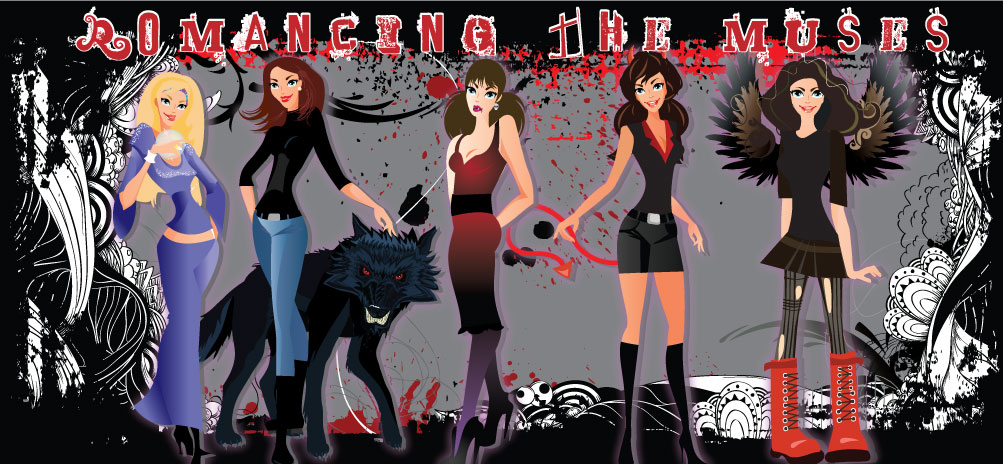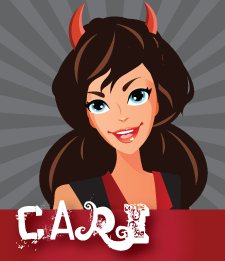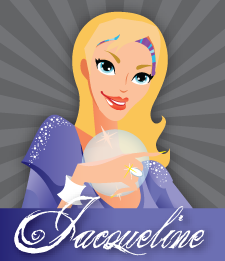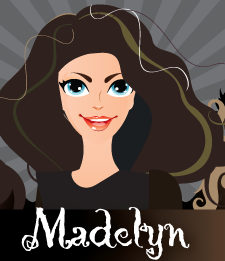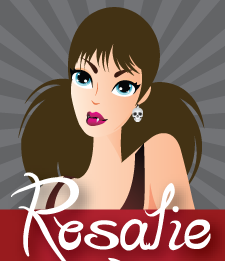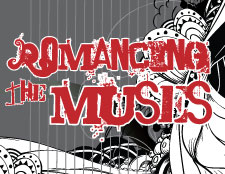As writers, we focus on making the intangible tangible. We strive to describe things that have never really been successfully described—emotions with definitions completely subjective to the individual emoting them, yet still somehow universal. To some, love might mean “never having to say you’re sorry.” Someone like me would amend that to something like, “love means saying you’re sorry when you mean it and not giving a damn what it does to your pride.”
As an editor, I see manuscripts from authors who have a killer story that falls completely flat due to lack of character. It’s the difference between the original Star Wars trilogy and the travesty that was the prequel films. Unlike the first films, many viewers didn’t care for the characters because they weren't complex or well-written. If they cared at all, it was because they were instructed to.
RedLetterMedia released three crushing multi-part vlog reviews of the prequel films that completely dismantled the protest of any apologist. One of the ways RLM demonstrated the inferiority not only as a part of a once golden franchise, but a movie at all, was asking fans to describe a character by their personality rather than appearance. For Luke Skywalker, Han Solo, and Leia Organa, this was a piece of cake. For Anakin Skywalker, Qui Gon Jinn, or any of the other prequel characters, it was near impossible…without putting some thought into it.
I’ve heard people complain about the acting in the prequel films, and in so, casting the script as a secondary problem. Liam Neeson a bad actor? Natalie Portman? Ewan McGregor? Hayden Christianson has been remarkable in some roles. Perhaps he wasn’t the best fit, but an actor is only as good as his script. Natalie Portman is a phenomenal actor, and anyone who thinks otherwise should go check out Black Swan.
It’s all in the writing.
The key element of the prequel films is betrayal. At the end, Obi Wan is screaming at a dying Anakin, telling the audience how he feels rather than showing it. And because he feels this way, we should as well. In the next scene, though, he’s just fine. Betrayal is something you can’t shake off, especially if it’s done at the hand of someone close to you. In my experience, it’s hollow and sad with little shocks of anger here and there, but really more just a blanket of nothing. It has left me uncomfortably numb—much more like Harrison Ford’s reaction at the killer’s identity in The Fugitive. If you’ve seen that movie, you know what I’m talking about.
No matter the genre—the fact that this particular example came from a science fantasy film notwithstanding—the power of story is the ability to make the most outrageous scenarios accessible to the audience. It doesn’t matter where the story is set or what it involves; a good writer will make it a human story. So look at your writing. Look at the language you use when describing love, sadness, loss, joy, excitement, betrayal, and so on. Ask your friends if they feel the intended emotion, or if they just know it’s there. Knowing and mastering the difference will only strengthen you as an author.
Showing posts with label regarding: characterization. Show all posts
Showing posts with label regarding: characterization. Show all posts
Monday, February 6, 2012
Monday, June 20, 2011
Han Shot First, Dammit!

When I was little, I was the Star Wars fan. It began with a love of the funny creatures, admittedly (Jabba the Hutt, most especially) and steadily progressed into an obsession for the series overall. The noble heroics of Luke Skywalker, the dashingly cocky Han Solo, and the cool, intelligent “I am Woman!” bad-assery of Leia Organa.
Bear in mind, this was no average, healthy obsession. I was a fangirl, and a purist. I collected action figures, magazines, watched the movies until I had them memorized, read the novelizations, wrote fanfic and even engaged in online role-play. The prequels? I defended them to the death, even though each viewing of The Phantom Menace killed me a little inside. I dressed up as a Jedi (or “Dark Jedi”) for Episode II, and went to the midnight showing of Episode III, only to wake up and view it again the next day.
I lived, ate, drank, breathed, and bled Star Wars.
Never in my wildest did I think I would get to the point where I can say any of the following:
1) Star Trek is superior
2) The prequels are a disaster
3) Harry Potter is my favorite all-time saga, hands down.
To the teenage me, any of the above would be blasphemous.
Granted, as I grew older, I began confessing little things to myself regarding the prequels. A couple years ago, I admitted the first one was rubbish, but still defended Episodes II and III…even though the “love story” between Anakin and Padme was cringe-worthy, I stood by it being a decent tragedy. I could never, though, pinpoint what exactly was the prequels’ main failing.
Turns out there were many failings. RedLetterMedia’s Plinkett reviews of the new series opened my eyes in a way they didn’t want to be opened. I have officially renounced the prequels from my personal canon of the Star Wars universe and become one of those “George Lucas Raped My Childhood” fans.
There is one glimmering ray of hope in the stinkbomb that was the prequel movies. If any writer out there needs a diagram on how to NOT write characters, look no further. Plinkett discusses this in his review of The Phantom Menace. The characters lacked any fundamental connection with the audience, and this was demonstrated with a simple challenge.
“Describe Character A without referring to his/her profession or what they look like.”
If your readers can’t go beyond this question, or have to search for an answer, you haven’t given them enough reason to connect with your character. Take Rhett Butler. He’s cocky, arrogant, swarmy, deceptive, strong-willed, determined, and when he loves he does so with all he is. Conversely, take Liam Neeson’s character from the prequel films. He’s….there. He has a beard. He talks with words. And that’s about it.
Characters should be more than their appearance and job status. If you’re writing a hopeless romantic, it’s not enough for you to tell us he’s a hopeless romantic. Show him doing something to convey that characteristic. When you send your manuscript to your CPs, ask them to look for these things. Make sure they can say something about your characters' actions and behavior, not just their description. After all, if we don’t know the characters well enough to care about them, whatever else happens in the book won’t matter to us, because there will be nothing at stake.
Character should never be undervalued or sacrificed. We need to know and care about these people. When they ache, we should ache with them, and for reasons beyond "it's the main character." We should remember their names after the book has been shelved. To me, that’s the ultimate test. If I can remember a character’s name a month after I read the book, I consider it well written. It means the character stuck with me.
So go forth. Write well and prosper. Try not. Do…or do not. There is no try.
As for me...I'll have to live with the tattered ruins of my childhood, having finally accepted the horrible truth.

Monday, May 16, 2011
Who's whatting what with who?
Have you ever read a novel wherein the author breezed over an explanation or offered one that wasn’t satisfactory? In other words, have you ever felt the author phoned it in?
Over the past few weeks, I’ve read three or four novellas that, while being well-written and entertaining, suffered from a lack of conflict. Conflict is essential to your plot, be it a novel-length book or something under fifteen thousand words. The main drive behind any story is the need for resolution as you watch the characters dig themselves into various holes, or view their actions and reactions to a life after the hole has been conquered, but not without consequences. I can’t tell you how many times conflict is forced upon a situation that really doesn’t call for it.
Think about it this way: if your friend said or did something that seemed unusual—something that directly affected you that you didn’t understand—the next step would logically be to approach that friend and ask what was going on. Similarly, if you caught someone doing something you knew they wouldn’t do, whereas you might immediately jump to an erroneous conclusion, chances are a simple conversation would set everything straight. If you find yourself in a situation, with a proposition or an opportunity that you would ordinarily laugh off, it normally takes more than fifteen minutes to talk yourself into something you find morally flawed or potentially dangerous.
Yet we’ve all had these things happen to us. We’ve had simple misunderstandings that turned into potentially friendship-ending fights. We’ve all found ourselves in positions where an opportunity has arisen we didn’t anticipate, though in order to take advantage of it, some wildly complex the-ends-will-justify-the-means course of action is needed. We’ve all stumbled through life while living. This is what makes fictional characters so accessible. In one way or another, relating to their trials and decisions is akin to experiencing them ourselves.
This is why conflict and decision-making are so vital to storytelling. When your characters are presented with a situation in which seemingly irrational behavior is needed for the events to proceed, the reader needs to be convinced just as much as the character that their choice is the right one. When a conflict arises that would ordinarily be resolved with a simple explanation, the reader needs to understand and be convinced by the character’s reasoning to not proceed with that simple explanation. Conflict and motive are key elements to any story. Consider your favorite book or movie of all time. What was the conflict? Why was it compelling? What kept you flipping pages or glued to the screen?
Furthermore, consider the following romantic classics of literature. What’s the conflict? What makes them popular? Why do the characters seem so accessible, yet similarly iconic?
1) Gone with the Wind
2) Pride and Prejudice
3) Jane Eyre
4) Wuthering Heights
5) The Phantom of the Opera
6) Rebecca
There is a degree of escapism in storytelling, but a part of that escapism coincides with the reader feeling the main characters’ drive or motivations would mirror their own actions if given that scenario. No, not everything needs to be perfect, some degree of reality, no matter the genre, should be present, if for nothing else so your readers, who do live in the real world, don’t abandon the journey.
Over the past few weeks, I’ve read three or four novellas that, while being well-written and entertaining, suffered from a lack of conflict. Conflict is essential to your plot, be it a novel-length book or something under fifteen thousand words. The main drive behind any story is the need for resolution as you watch the characters dig themselves into various holes, or view their actions and reactions to a life after the hole has been conquered, but not without consequences. I can’t tell you how many times conflict is forced upon a situation that really doesn’t call for it.
Think about it this way: if your friend said or did something that seemed unusual—something that directly affected you that you didn’t understand—the next step would logically be to approach that friend and ask what was going on. Similarly, if you caught someone doing something you knew they wouldn’t do, whereas you might immediately jump to an erroneous conclusion, chances are a simple conversation would set everything straight. If you find yourself in a situation, with a proposition or an opportunity that you would ordinarily laugh off, it normally takes more than fifteen minutes to talk yourself into something you find morally flawed or potentially dangerous.
Yet we’ve all had these things happen to us. We’ve had simple misunderstandings that turned into potentially friendship-ending fights. We’ve all found ourselves in positions where an opportunity has arisen we didn’t anticipate, though in order to take advantage of it, some wildly complex the-ends-will-justify-the-means course of action is needed. We’ve all stumbled through life while living. This is what makes fictional characters so accessible. In one way or another, relating to their trials and decisions is akin to experiencing them ourselves.
This is why conflict and decision-making are so vital to storytelling. When your characters are presented with a situation in which seemingly irrational behavior is needed for the events to proceed, the reader needs to be convinced just as much as the character that their choice is the right one. When a conflict arises that would ordinarily be resolved with a simple explanation, the reader needs to understand and be convinced by the character’s reasoning to not proceed with that simple explanation. Conflict and motive are key elements to any story. Consider your favorite book or movie of all time. What was the conflict? Why was it compelling? What kept you flipping pages or glued to the screen?
Furthermore, consider the following romantic classics of literature. What’s the conflict? What makes them popular? Why do the characters seem so accessible, yet similarly iconic?
1) Gone with the Wind
2) Pride and Prejudice
3) Jane Eyre
4) Wuthering Heights
5) The Phantom of the Opera
6) Rebecca
There is a degree of escapism in storytelling, but a part of that escapism coincides with the reader feeling the main characters’ drive or motivations would mirror their own actions if given that scenario. No, not everything needs to be perfect, some degree of reality, no matter the genre, should be present, if for nothing else so your readers, who do live in the real world, don’t abandon the journey.
Monday, March 7, 2011
Don't I know you from somewhere?
Actually writing your manuscript is only part of a longer battle, but then again, that’s old news. You have, among other things, drafts, revisions, betas, crit partner edits…and then, if you’re accepted at a pub, there’s the three to seven rounds of additional edits, line edits, galleys, cover art…and that’s all before you even have a product to pimp.
But before you get ahead of yourself, you have to get to know your characters. They are the ones telling the story, after all. We see everything they see and our opinions are often shaped by their bias. So we get to know them. Seems easy enough, right? As the architect, you should be on first name basis with your creation.
You also should have a good grasp on when to disclose certain pieces of information. Once you have a back story established for your title characters, it can be very tempting to unleash it in a tidal wave of information on unsuspecting readers. As with any person, character actions, motivations, reactions, and thoughts are almost always—at least in part—based on the experience given before the events of the novel commence. Even still, there should be a pace to what is revealed, when it’s revealed, and how. To make your reader connect with a character—when necessary—it’s always better to show them responding to present situations by drawing upon their past.
Slowly revealing a character by revealing their past enables readers to see them as more than names on a page. If done well, the result will be someone who feels real enough to be in the room with you—someone you can picture without hesitation.
But before you get ahead of yourself, you have to get to know your characters. They are the ones telling the story, after all. We see everything they see and our opinions are often shaped by their bias. So we get to know them. Seems easy enough, right? As the architect, you should be on first name basis with your creation.
You also should have a good grasp on when to disclose certain pieces of information. Once you have a back story established for your title characters, it can be very tempting to unleash it in a tidal wave of information on unsuspecting readers. As with any person, character actions, motivations, reactions, and thoughts are almost always—at least in part—based on the experience given before the events of the novel commence. Even still, there should be a pace to what is revealed, when it’s revealed, and how. To make your reader connect with a character—when necessary—it’s always better to show them responding to present situations by drawing upon their past.
Slowly revealing a character by revealing their past enables readers to see them as more than names on a page. If done well, the result will be someone who feels real enough to be in the room with you—someone you can picture without hesitation.
Monday, February 14, 2011
There's Something About Mary...
I actually don’t remember the first time Mary and I became acquainted. After all, I’ve done my best to avoid her and her friend Gary as long as I’ve been aware of them. Yet Mary and Gary are heavily present in all forms of media, therefore ignoring them is often not as easy as it seems. You might have encountered Mary in a book—disguised as Bella Swan, perhaps?—or seen Gary on Star Trek in the form of Wesley Crusher. At any rate, Mary and Gary might assume pleasing forms, but they are the laziest bunch of characters to write, and likewise, not very interesting to read.
You might be asking yourself, who exactly is this Mary? Why is she so boring? Why should I avoid her like a pit of starved rabid wolverines? Most of you already know the answer.
This is Mary:
- Manners are “idealized” or “hackneyed”
- Lacking noteworthy flaws
- Primarily functioning as wish-fulfillment
Other mannerisms are likely to include:
- Popular for no reason
- Everyone’s in love, in lust, or fascinated with her just for being “unique” (Sookie Stackhouse comes to mind)
- Dominate the spotlight for no ostensible reason other than author favoritism.
Mary’s friend, Gary, embodies these characteristics as well.
What’s wrong with Mary? Well, it depends. Sometimes, there’s nothing really WRONG, just a little hokey. I mentioned Sookie Stackhouse as an example of Mary, and while I believe that argument holds water, that doesn’t mean I dislike the Sookie series. However, writers should be very careful in refraining from crafting a Mary character, as discerning readers regard her as flat and uninteresting. After all, who wants to read about a perfect character? It allows agonizingly little conflict in most instances.
Characters should not be perfect, and though most Marys and Garys are recognized as “author insert,” that’s not to say you and your creation can’t share a quality or quirk. Say you’re allergic to dogs and a bit of a neat-freak. Giving your character these qualities doesn’t make her a Mary Sue; making her overly perfect, lusted by all who surround her (or, conversely, hated by another character for No Reason Whatsoever), incapable of having faults…these are things to avoid. Readers don’t want Messiahs in their books—they want people. If there’s conflict between two main characters, we want to be able to sympathize with both, even if we lean more heavily on one side.
How can you avoid Mary? After all, no one SEEKS Mary when crafting their novel. In fact, many authors accidentally allow Mary access to their manuscript without realizing it. If you feel your manuscript might have been compromised, there are several ways to make sure Mary steers clear of you and your writing. I heavily recommend checking out some of the available litmus tests.
http://www.ponylandpress.com/ms-test.html
http://www.springhole.net/quizzes/marysue.htm
http://www.katfeete.net/writing/marysue.html
If you discover you have, in fact, allowed Mary into a previous work, take a deep breath, relax, and move on. You couldn’t have known. She loves preying upon new authors. Just be careful in future endeavors…and keep your backspace-key handy.
You might be asking yourself, who exactly is this Mary? Why is she so boring? Why should I avoid her like a pit of starved rabid wolverines? Most of you already know the answer.
This is Mary:
- Manners are “idealized” or “hackneyed”
- Lacking noteworthy flaws
- Primarily functioning as wish-fulfillment
Other mannerisms are likely to include:
- Popular for no reason
- Everyone’s in love, in lust, or fascinated with her just for being “unique” (Sookie Stackhouse comes to mind)
- Dominate the spotlight for no ostensible reason other than author favoritism.
Mary’s friend, Gary, embodies these characteristics as well.
What’s wrong with Mary? Well, it depends. Sometimes, there’s nothing really WRONG, just a little hokey. I mentioned Sookie Stackhouse as an example of Mary, and while I believe that argument holds water, that doesn’t mean I dislike the Sookie series. However, writers should be very careful in refraining from crafting a Mary character, as discerning readers regard her as flat and uninteresting. After all, who wants to read about a perfect character? It allows agonizingly little conflict in most instances.
Characters should not be perfect, and though most Marys and Garys are recognized as “author insert,” that’s not to say you and your creation can’t share a quality or quirk. Say you’re allergic to dogs and a bit of a neat-freak. Giving your character these qualities doesn’t make her a Mary Sue; making her overly perfect, lusted by all who surround her (or, conversely, hated by another character for No Reason Whatsoever), incapable of having faults…these are things to avoid. Readers don’t want Messiahs in their books—they want people. If there’s conflict between two main characters, we want to be able to sympathize with both, even if we lean more heavily on one side.
How can you avoid Mary? After all, no one SEEKS Mary when crafting their novel. In fact, many authors accidentally allow Mary access to their manuscript without realizing it. If you feel your manuscript might have been compromised, there are several ways to make sure Mary steers clear of you and your writing. I heavily recommend checking out some of the available litmus tests.
http://www.ponylandpress.com/ms-test.html
http://www.springhole.net/quizzes/marysue.htm
http://www.katfeete.net/writing/marysue.html
If you discover you have, in fact, allowed Mary into a previous work, take a deep breath, relax, and move on. You couldn’t have known. She loves preying upon new authors. Just be careful in future endeavors…and keep your backspace-key handy.
Subscribe to:
Posts (Atom)
